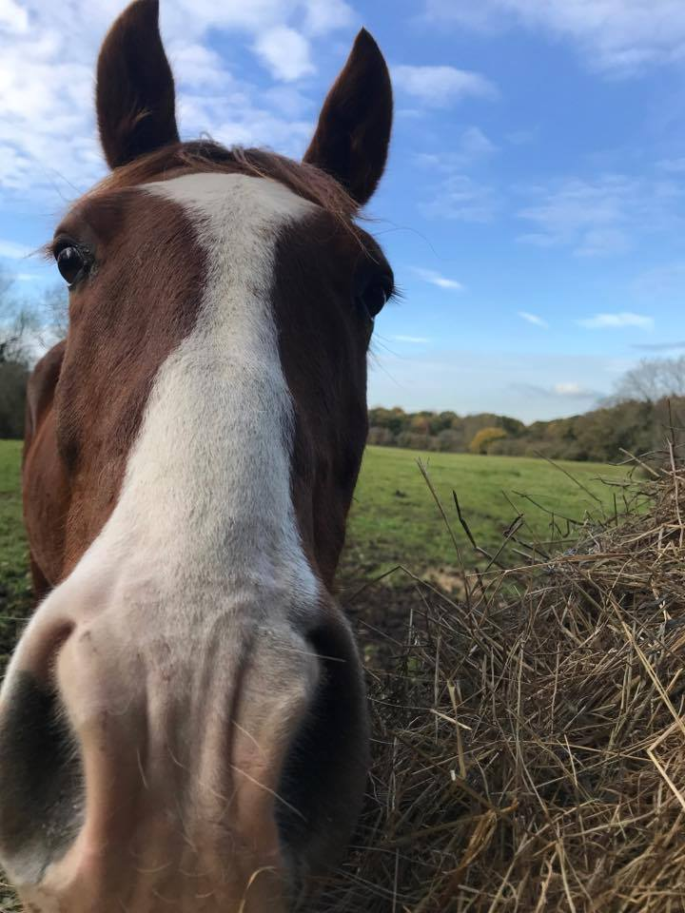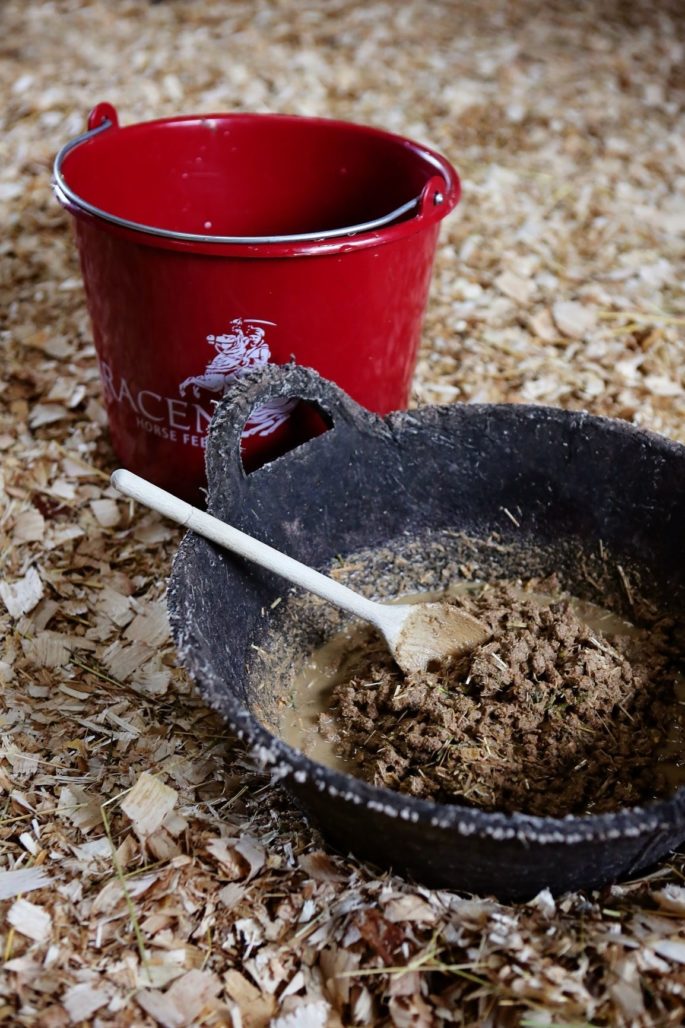Increasing Forage Intake
All horses require an adequate supply of forage (grass, hay or haylage), and this should form the basis of every horse’s ration. As a general rule of thumb long stem forage (grass, hay, and haylage) should be fed at a rate of 2% – 2.5% of body weight per day and should NEVER fall below 1.5% of body weight per day.
Owners of fussy feeders, those with a limited appetites and older horses with poor dentition will find it more of a struggle to ensure their horses receive the required levels of good quality fibre in their diet, especially over the winter months. It is essential that all horses have their forage requirements met and this factsheet will outline ways in which we can ensure these horses are receiving their daily forage requirement.
Why is forage so important?

The physical need for forage is to;
- meet a large proportion of the horse’s energy (calorie) intake
- encourage saliva production which buffers stomach acid
- protect stomach lining from acid
- prevent the intestines twisting and looping over each other
- aid the passage of food through the gut to eliminate gas bubbles
- help maintain a stable pH in the hindgut of the horse
Don’t forget the psychological need;
Horses have a natural ‘drive’ to chew and if not given forage to chew on will make abnormal or even extreme adjustments to cope. If restricted from forage for long periods of time horses will start to show stereotypical behaviours such as wood chewing, box walking, weaving, and crib-biting
Increasing fibre intake for Horses with Poor Appetites
Some horses seem disinterested in their hay and haylage, even if it is fed ad-lib. Rather than assume they are simply not hungry consider how they eat in the wild and how this differs in domestication. Horses are natural browsers and in wild situations have been observed to eat lots of different types of forage on a daily basis. This is limited in domestication to one or two forage sources at most. Due to this natural behaviour being restricted horses exhibit ‘sensory-specific satiety’ where they become ‘fed up’ by one forage type but are still motivated to consume others. If we try to mimic a more natural approach to feeding forage, by offering horses a variety of fibre sources, horses will move from one source to another, mimicking their natural “browsing” behaviours. This has shown to stimulate appetite and consequently increase long-stem fibre intake.
- Simply place large buckets of different fibre sources around the stable, in addition to hay and/or haylage.
- Additional fibre sources include;
- short chop chaffs, such as Saracen Super Fibre Mix
- chopped grass or grass nuts
- fibre cubes, such as Saracen Super Fibre Cubes (these can also be placed in a treat ball)
- soaked beet products, such as Saracen Re-Covery Mash
Increasing fibre intake for Horses with Poor Teeth

Horses with poor dentition need to be feed forage in a form the find easy to chew and eat. For some horses this will simply be a case of feeding chaff and Super Fibre Cubes on an ad-lib basis. However, for some horses even this becomes too difficult to manage and these horses require a soaked forage replacer that is easier to eat. Remember that the forage replacer should provide a minimum of 1.5% of the horse’s bodyweight and should always be made available to the horse when they would normally have hay or haylage. To make the forage replacer mix the different feeds together in a large bucket with plenty of additional water to make a soft mash.
Example forage replacer rations:
| Forage “replacer” product | 250kg BW | 400kg BW | 500kg BW | 650kg BW |
|---|---|---|---|---|
| Super Fibre Mix | 2.25kg | 3.5kg | 4.5kg | 5.25kg |
| Super Fibre Cubes | 1.0kg | 2.0kg | 2.0kg | 3.0kg |
| RE-COVERY Mash | 0.5kg | 0.5kg | 1.0kg | 1.5kg |
| Total Forage Replacer Quantity | 3.75kg | 6.0kg | 7.5kg | 9.75kg |
| **These recommendations are meant as a guideline only and may need to be adjusted according to the horse’s body condition, work levels general health and quality of pasture** | ||||
Which Saracen products?
- SUPER FIBRE CUBES are a great way to increase the fibre content of any horse’s ration. The pencils have a low starch and sugar content and are cereal free, making them suitable for good-doers and those prone to laminitis or digestive problems. Soya oil is used within the pencil to help support optimum skin and coat condition. The high fibre content makes Super Fibre Cubes ideal as a partial hay replacer at times when hay is either scarce, expensive or of poor quality. As Super Fibre Cubes are dust-free they are an excellent choice to help maintain normal respiratory health. They can also be easily soaked to form a mash for horses with poor dentition.
- SUPER FIBRE MIX is a versatile and palatable high fibre complete feed that can be used in many different situations, either as the sole complete ration or as a supplementary chaff or additional fibre feed. A range of herbs including mint and oregano help to maintain appetite in shy or fussy feeders. Super Fibre Mix contains a live yeast and a natural source of vitamin E, which play a supporting role in maintaining normal digestive and immune function, particularly during periods of stress e.g. travelling, competing or sickness.
- RE-COVERY MASH contains a blend of ’Super-Fibres’, known for their superior digestibility and ability to support the health of the whole digestive tract. To further support digestive health Re-Covery Mash also includes a live yeast to support gut flora and stabilise the pH of the gut. An elevated level of vitamin E is included to protect the horse from free radical damage that occurs as a natural part of aging or during work periods. Re-Covery Mash has been flavoured with an encapsulated banana flavour to entice fussy feeders. Encapsulation means that the flavour is protected and released through the physical process of chewing. Encapsulation is more beneficial than essences and oils as they both tend loose taste and aroma very quickly. Saracen Re-Covery Mash should be soaked before use and will take 5 minutes to soak in warm water or 10 minutes in cold water.
Download a PDF of this fact sheet for future reference.
Download nowFeed Advice Form
Complete our online form to receive a detailed nutritional plan for your horse or pony from one of our registered nutritionists.
Quick Feed Finder
Use our quick and easy feed finder as a guide to select the right feed for your horse or pony.











